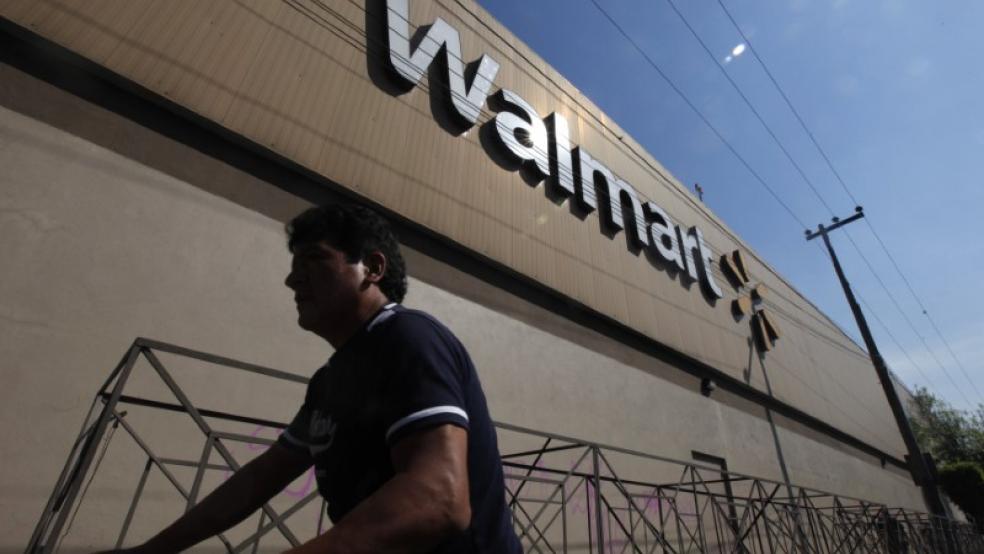U.S. retail sales barely rose in September and producer prices recorded their biggest decline in eight years, raising further doubts about whether the Federal Reserve will raise interest rates this year.
The weak reports on Wednesday were the latest suggestion that the economy was losing momentum in the face of slowing global growth, a strong dollar and lower oil prices that are hampering capital spending in the energy sector. Job growth braked sharply in the past two months.
Related: Here’s Why Consumers Aren’t Spending
"The softness of September's figures supports our view that the Fed probably isn't going to hike interest rates until early next year," said Paul Ashworth, chief U.S. economist at Capital Economics in Toronto.
The Commerce Department said retail sales edged up 0.1 percent last month largely as cheaper gasoline weighed on service station receipts. Giving the report a weak tone, sales in August were revised down to show them unchanged instead of rising 0.2 percent.
Retail sales excluding automobiles, gasoline, building materials and food services slipped 0.1 percent last month after a downwardly revised 0.2 percent gain in August.
These so-called core retail sales correspond most closely with the consumer spending component of gross domestic product.
Related: Why We Might Be Headed for a Recession in 2016
September's weak number and the downward revision to August's core retail sales could see economists trimming their third-quarter GDP estimates, which were slashed last week after the trade deficit widened sharply in August. Third-quarter growth estimates are currently running below a 2 percent annual rate.
The economy expanded at a 3.9 percent rate in the second quarter. Core retail sales previously were reported to have advanced 0.4 percent in August.
"It suggests that consumers are beginning to tighten their purse strings," said Millan Mulraine, deputy chief economist at TD Securities in New York. "This will be a particular concern for the Fed as this segment of the economy remains the key source of support for the economic recovery."
Discretionary spending, however, appears to be fairly healthy, with consumers spending more on hobbies, clothing and eating out. That points to underlying strength in domestic demand, which should provide some cushion against softening global growth.
Related: 5 Reasons Oil Prices Are Moving Higher
U.S. stocks were trading slightly higher and prices for U.S. government debt rose. The dollar fell against a basket of currencies.
WEAK INFLATION
In a separate report, the Labor Department said on Wednesday its producer price index fell 0.5 percent in September, the largest drop since January, after being unchanged in August.
In the 12 months through September, the PPI fell 1.1 percent after declining 0.8 percent in August. It was the eighth straight 12-month decrease in the index.
Most economists expect the Fed will raise its benchmark overnight interest rate in December, but financial markets are only pricing in an increase early next year.
Related: How Amazon, Apple and Google are Stomping Out Competition in the U.S. Economy
The weak inflation environment is one of the obstacles confronting policymakers who are contemplating raising rates for the first time in nearly a decade. The U.S. central bank has kept its short-term interest rate near zero since late 2008.
Economic growth has softened in recent months, mainly because of weak exports, a persistent decline in energy sector investment and a so-called inventory correction, which have hurt manufacturing activity.
Another report from the Commerce Department showed business inventories were unchanged in August for a second straight month. Inventories increased by more than $100 billion in each of the last two quarters, a record back-to-back rise that was seen as unsustainable.
Retail sales in September were held back by a 3.2 percent fall in receipts at service stations, the largest drop since January, after declining 2.0 percent in August. Excluding gasoline, retail sales increased 0.4 percent last month.
Sales at auto dealerships increased 1.7 percent after rising 0.4 percent in August. There were increases in sales at clothing and furniture stores. Consumers also boosted spending at sporting goods and hobby stores as well as at restaurants and bars.
But receipts at building materials and garden equipment stores fell. Electronics and appliance stores failed to get a boost from Apple's (AAPL.O) new iPhone. Online sales also fell last month.




